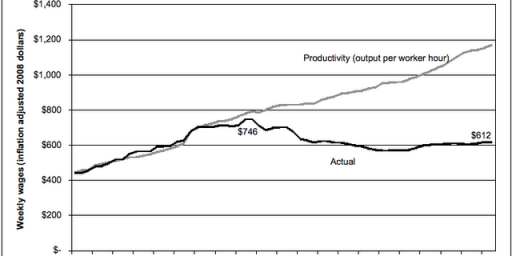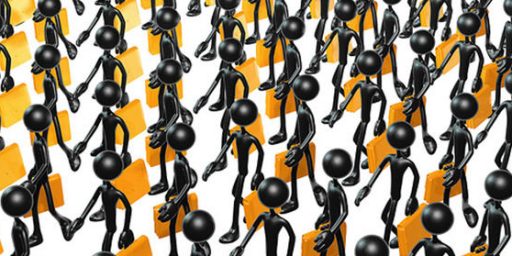Naps, Breaks, and Vacations Key to Productive Workforce
Tony Schwartz says, "Relax! You'll Be More Productive."
Tony Schwartz says, “Relax! You’ll Be More Productive.”
THINK for a moment about your typical workday. Do you wake up tired? Check your e-mail before you get out of bed? Skip breakfast or grab something on the run that’s not particularly nutritious? Rarely get away from your desk for lunch? Run from meeting to meeting with no time in between? Find it nearly impossible to keep up with the volume of e-mail you receive? Leave work later than you’d like, and still feel compelled to check e-mail in the evenings?
More and more of us find ourselves unable to juggle overwhelming demands and maintain a seemingly unsustainable pace. Paradoxically, the best way to get more done may be to spend more time doing less. A new and growing body of multidisciplinary research shows that strategic renewal — including daytime workouts, short afternoon naps, longer sleep hours, more time away from the office and longer, more frequent vacations — boosts productivity, job performance and, of course, health.
[…]
Like time, energy is finite; but unlike time, it is renewable. Taking more time off is counterintuitive for most of us. The idea is also at odds with the prevailing work ethic in most companies, where downtime is typically viewed as time wasted. More than one-third of employees, for example, eat lunch at their desks on a regular basis. More than 50 percent assume they’ll work during their vacations.
In most workplaces, rewards still accrue to those who push the hardest and most continuously over time. But that doesn’t mean they’re the most productive.
Spending more hours at work often leads to less time for sleep and insufficient sleep takes a substantial toll on performance. In a study of nearly 400 employees, published last year, researchers found that sleeping too little — defined as less than six hours each night — was one of the best predictors of on-the-job burn-out. A recent Harvard study estimated that sleep deprivation costs American companies $63.2 billion a year in lost productivity.
The Stanford researcher Cheri D. Mah found that when she got male basketball players to sleep 10 hours a night, their performances in practice dramatically improved: free-throw and three-point shooting each increased by an average of 9 percent.
Daytime naps have a similar effect on performance. When night shift air traffic controllers were given 40 minutes to nap — and slept an average of 19 minutes — they performed much better on tests that measured vigilance and reaction time.
Longer naps have an even more profound impact than shorter ones. Sara C. Mednick, a sleep researcher at the University of California, Riverside, found that a 60- to 90-minute nap improved memory test results as fully as did eight hours of sleep.
MORE vacations are similarly beneficial. In 2006, the accounting firm Ernst & Young did an internal study of its employees and found that for each additional 10 hours of vacation employees took, their year-end performance ratings from supervisors (on a scale of one to five) improved by 8 percent. Frequent vacationers were also significantly less likely to leave the firm.
As athletes understand especially well, the greater the performance demand, the greater the need for renewal. When we’re under pressure, however, most of us experience the opposite impulse: to push harder rather than rest. This may explain why a recent survey by Harris Interactive found that Americans left an average of 9.2 vacation days unused in 2012 — up from 6.2 days in 2011.
[…]
In the 1950s, the researchers William Dement and Nathaniel Kleitman discovered that we sleep in cycles of roughly 90 minutes, moving from light to deep sleep and back out again. They named this pattern the Basic-Rest Activity Cycle or BRAC. A decade later, Professor Kleitman discovered that this cycle recapitulates itself during our waking lives.
The difference is that during the day we move from a state of alertness progressively into physiological fatigue approximately every 90 minutes. Our bodies regularly tell us to take a break, but we often override these signals and instead stoke ourselves up with caffeine, sugar and our own emergency reserves — the stress hormones adrenaline, noradrenaline and cortisol.
Working in 90-minute intervals turns out to be a prescription for maximizing productivity. Professor K. Anders Ericsson and his colleagues at Florida State University have studied elite performers, including musicians, athletes, actors and chess players. In each of these fields, Dr. Ericsson found that the best performers typically practice in uninterrupted sessions that last no more than 90 minutes. They begin in the morning, take a break between sessions, and rarely work for more than four and a half hours in any given day.
“To maximize gains from long-term practice,” Dr. Ericsson concluded, “individuals must avoid exhaustion and must limit practice to an amount from which they can completely recover on a daily or weekly basis.”
I’ve systematically built these principles into the way I write. For my first three books, I sat at my desk for up 10 hours a day. Each of the books took me at least a year to write. For my two most recent books, I wrote in three uninterrupted 90-minute sessions — beginning first thing in the morning, when my energy was highest — and took a break after each one.
Along the way, I learned that it’s not how long, but how well, you renew that matters most in terms of performance. Even renewal requires practice. The more rapidly and deeply I learned to quiet my mind and relax my body, the more restored I felt afterward. For one of the breaks, I ran. This generated mental and emotional renewal, but also turned out to be a time in which some of my best ideas came to me, unbidden. Writing just four and half hours a day, I completed both books in less than six months and spent my afternoons on less demanding work.
Somehow, I don’t see employers adopting this cycle–much less encouraging daytime naps–anytime soon.







Of course employers won’t adopt it. At the margins it’s not about increasing productivity or even profitability, it’s about the power of the managerial class over the working class.
If bosses and executives can trade a few units of production for the ability to dominate their employees’ lives, they will.
Of course not all companies are stuck in that mindset. Google, for example, allows naps, and they seem to be doing okay. I’ve been at the same small company for over 15 years, happy as a clam, and usually most productive after an afternoon nap. Even the boss takes a nap occasionally.
Well, naps, breaks and vacations are the exact opposite of what makes robots productive. So, you got to know who your job competitors are.
Plus corporate America rewards looking busy. Rewards micromanagement.
This may explain the behavior of one of my co-workers who spent much of the day sleeping in the supply room. He was contributing to the productivity of the work force!
@Dave Schuler: Indeed. I’m sure he was a dynamo the few minutes he actually worked. Presumably, this concept has a point of diminishing returns.
This is sick.
I’m not sure about any of the above, but I can tell you I know too many people, who hold senior management positions, who are reticent to take vacation leave longer than a week for fears related to job security.
America these days is no country for non-represented and exempt employees.
Good management is the key to a productive workforce. Part of being a good manager is knowing when to take your foot off the gas.
Fringe benefits are a part of the equation. Compensation packages. The particular structure of compensation packages. Performance bonuses. Staggered and graded commission schedules. Profit sharing. ESOPs. A pat on the back. “Mental health” days off. Sometimes, however, a good swift kick in the arse is what’s necessary.
What’s very ironic about the chattering classes, especially Internet blogs, is the stunning lack of real world experience of the participants. You can read dozens of articles on political blogs about corporate America. Very few of the authors and even fewer of the commentators have any idea about how corporate America actually functions.
Ultimately businesses and all items relative to businesses, including productivity, are all about the people. At the margins a company can take various steps to improve productivity, some positive and others negative. But in the final analysis the people themselves are the ultimate arbiters of how productive they’ll be. You can’t change a person’s underlying personality. Certainly not within the parameters of the workplace. Some people are and will remain self-motivated. Others will not. Some will work hard and be productive. Others will not. Paid vacation or otherwise. Cat naps or otherwise.
The cream always rises to the top.